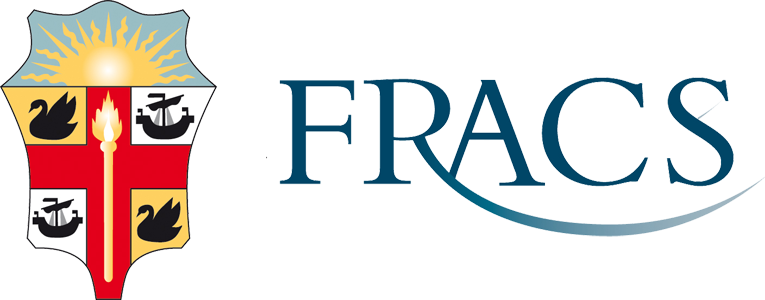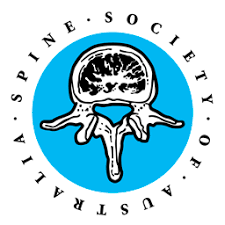Types of Neck & Arm Pain
Neck and arm pain can manifest in different forms depending on the root cause:
- Musculoskeletal pain: This is the most common type of neck and arm pain, and it's usually due to an injury or strain of the muscles, ligaments, or tendons, such as from overuse or trauma.
- Nerve (Neuropathic pain): Conditions like cervical radiculopathy can cause nerve pain. This may feel like a sharp, shooting pain that travels down the arm, often accompanied by sensations like numbness, tingling, or weakness.
- Referred pain: This is pain perceived at a location other than the site of the painful stimulus. For example, a problem with the heart can cause pain in the left arm.
- Chronic pain: This type of pain continues for a prolonged period, often even after an initial injury or cause has been treated. Chronic neck and arm pain can significantly impact the quality of life.
Common Types of Neck Pain
- Cervical Spondylosis: This is a general term for age-related wear and tear affecting the spinal disks in your neck. Over time, the discs dehydrate and shrink, causing signs of osteoarthritis.
- Cervical Radiculopathy: This occurs when a nerve root coming off the spinal cord becomes compressed, causing pain, numbness, or a tingling sensation in the neck, shoulder, and arm.
- Cervical Herniated Disc: This occurs when the inner core of a disc in the neck leaks out, or herniates, through the disc wall and presses on an adjacent nerve root.
- Cervical Stenosis: A condition where the spinal canal narrows and compresses the spinal cord and nerves, causing chronic pain.
- Whiplash: A neck injury due to forceful, rapid back-and-forth neck movement, like the cracking of a whip. Whiplash is most commonly received from auto accidents.
Common Types of Arm Pain
- Tennis Elbow (Lateral Epicondylitis): Overuse of the muscles and tendons of your forearm, near the elbow joint, can cause this condition.
- Golfer's Elbow (Medial Epicondylitis): This is similar to tennis elbow but occurs inside the elbow. It's not limited to golfers and can be caused by any activity involving repetitive wrist twisting.
- Rotator Cuff Injuries: These are common in people who repeatedly perform overhead motions in their jobs or sports. The rotator cuff is a group of muscles and tendons surrounding the shoulder joint, keeping the head of your upper arm bone firmly within the shoulder's shallow socket.
- Carpal Tunnel Syndrome: This condition is caused by pressure on the median nerve, which runs the arm's length, goes through a passage in the wrist called the carpal tunnel, and ends in the hand.
- Cubital Tunnel Syndrome occurs when the ulnar nerve, one of the three main nerves in your arm, becomes compressed or irritated.
Disc Protrusion
Arm pain can be caused by a disc protrusion (also referred to as a herniated or slipped disc) in the neck. This typically results when the inner core of a spinal disc protrudes out through its outer layer. This protrusion can pressure the nearby nerve roots or spinal cord, leading to pain radiating down the arm.
Arm pain caused by disc protrusion includes:
- A pinched nerve (Radiculopathy)
- Spinal cord compression (Myelopathy)
Pinched Nerve (Radiculopathy)
Radiculopathy, often called a "pinched nerve", occurs when a nerve root in the spine is compressed or irritated. This can happen in any part of the spine, but when it occurs in the neck, it's called cervical radiculopathy; in the lower back, it's called lumbar radiculopathy. Sciatica is a specific type of lumbar radiculopathy where the sciatic nerve is affected.
Causes
Radiculopathy is most commonly caused by a disc protrusion (also known as a herniated or slipped disc) where the disc's inner gel-like material protrudes outwards and compresses a nerve root. Other causes can include:
- Degenerative changes: As the spine ages, changes like disc degeneration and bone spurs can compress nerve roots.
- Spinal stenosis: Narrowing of the spinal canal can lead to nerve compression.
- Trauma: An injury can cause a disc to rupture or bulge, leading to radiculopathy.
Symptoms
Symptoms can vary depending on which nerve is affected but may include:
- Pain in the arm or hand. This pain is often described as sharp, burning, or radiating.
- Numbness or tingling sensation in the arm or fingers.
- Weakness in the muscles of the arm, hand, or fingers.
Diagnosis
The diagnosis starts with a thorough medical history and physical examination. Your doctor may then order the following:
- X-rays: To look for bone spurs or other changes in the spine.
- MRI or CT scans: To get a detailed look at the discs and nerve roots.
- Electromyography (EMG): This test measures the electrical activity of the nerves and muscles, which can confirm nerve compression and its location.
Treatment
Treatment for radiculopathy can vary based on the severity of symptoms:
- Conservative treatment often includes physical therapy exercises, pain medications such as non-steroidal anti-inflammatory drugs (NSAIDs), or corticosteroid injections. Nerve pain medications, like gabapentin or pregabalin, might also be used.
- Surgery: If conservative treatments don't provide relief, or if the nerve compression is causing significant weakness, loss of function, or worsening pain, surgery may be recommended. This could include a discectomy (removal of the herniated disc) or a spinal fusion.
As always, it's important to consult with a doctor for an accurate diagnosis and personalised treatment plan.
Spinal Cord Compression (Myelopathy)
When a protruding disc compresses the spinal cord, it can lead to a condition known as myelopathy. This more serious condition involves a single nerve root and the spinal cord.
Causes
- Age-related Changes: As we age, changes in the spine, such as bone spurs, disc herniation, or thickening of ligaments, can compress the spinal cord.
- Spinal Stenosis: Narrowing the spinal canal in the neck can compress the spinal cord.
- Injury: A severe neck injury can cause damage to the spinal cord.
- Rheumatoid Arthritis: This inflammatory condition can lead to more wear and tear on the neck portion of the spine.
Symptoms
- Neck Pain is a common symptom, but not everyone with cervical myelopathy will experience it.
- Arm Pain: This can occur along with numbness and weakness in the arms.
- Hand Coordination Problems: Difficulty with precise hand movements, such as buttoning a shirt or using utensils, is common.
- Walking Difficulty: Some people may have problems with balance or a heavy feeling in the legs.
Diagnosis
Your doctor will start with a physical examination and medical history. Tests to confirm a diagnosis may include:
- MRI: This can provide a detailed spine image and show if the spinal cord is compressed.
- CT scan: It can be used if you can't have an MRI.
- X-rays: They can show spinal canal narrowing or injuries to the bones in the neck.
- Electromyogram (EMG): This may be used to assess the electrical activity of your muscles.
Treatment
Treatment depends on the severity of symptoms and the extent of spinal cord compression.
- Non-surgical Treatment: If symptoms are mild, treatment may include physical therapy and over-the-counter pain relievers. Regular follow-up appointments will monitor for progression.
- Surgery: This is often necessary in moderate to severe cases to relieve pressure on the spinal cord. The specific type of surgery depends on the cause of myelopathy. For example, a herniated disc might be removed, or bone spurs might be trimmed to widen the spinal canal.
The overall goal of treatment is to relieve symptoms, stop or slow the progression of the disease, and improve your quality of life. As always, it's essential to consult a neurosurgeon for an accurate diagnosis and treatment plan.
Contact Us
Hours
Monday to Friday
9.00am – 5.00pm
*This may vary on occasions or the rooms may be briefly unattended.
All Rights Reserved | Greg Malham, Neurosurgeon, BSc MBChB DMed FRACS



